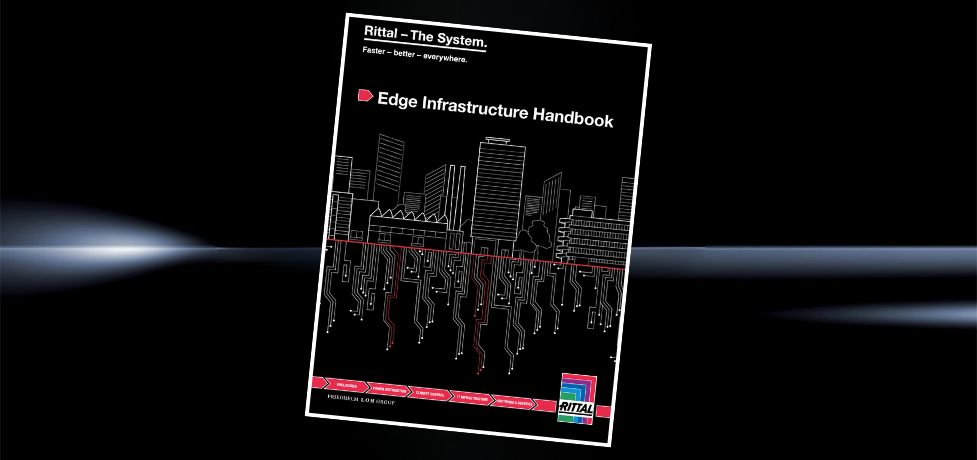By Rittal on Apr 3, 2025 11:44:27 PM
The way we manage and process data is evolving at an unprecedented pace. As organisations generate and rely on ever-growing volumes of data, traditional centralised data centres alone are no longer sufficient. To meet the increasing demands for speed, security, and efficiency, businesses are shifting towards edge computing, bringing IT infrastructure closer to where data is generated.
This shift to edge computing is driven by the need for real-time processing, lower latency, and improved network reliability. Industries ranging from manufacturing and logistics to healthcare and retail are rapidly adopting edge data centres to support IoT devices, automation systems, and remote monitoring. However, with these advancements come new challenges: limited space, environmental hazards, power constraints, and security concerns.
Addressing the Challenges of Edge Computing
While edge computing provides significant advantages, deploying IT infrastructure in non-traditional environments presents unique challenges. Edge locations can be exposed to dust, temperature fluctuations, vibration, humidity, and security risks, which means that standard data centre solutions often don’t meet the requirements.
Some of the key challenges businesses face when deploying edge data centres include:
- Space Constraints – Unlike traditional data centres, edge deployments often need to fit within existing facilities, such as warehouses, manufacturing plants, or retail backrooms. This requires compact, modular enclosures that can integrate seamlessly into tight spaces.
- Cooling and Thermal Management – With higher computing densities, effective cooling is critical to maintaining system performance and preventing hardware failure. Edge environments often lack traditional HVAC infrastructure, making self-contained cooling solutions essential.
- Power and Redundancy – Edge data centres must remain operational 24/7, even in areas where power reliability is a concern. Selecting the right power distribution units (PDUs), battery backup, and UPS solutions is crucial for ensuring uptime and resilience.
- Security and Monitoring – Deploying IT infrastructure in unsecured or remote locations introduces new physical security risks. Edge enclosures need access control, real-time monitoring, and environmental sensors to prevent unauthorised access and system failures.
- Integration with Existing IT & OT Infrastructure – Edge computing often involves integrating IT (Information Technology) and OT (Operational Technology), requiring seamless connectivity between on-site devices, cloud platforms, and central data centres.
Introducing the Rittal Edge Infrastructure Handbook
A Practical Guide for IT Professionals Navigating Edge Deployments
At Rittal, we understand the complexities of deploying IT infrastructure in challenging environments. Our solutions are built on decades of expertise in industrial enclosures, climate control, and power distribution, ensuring edge IT deployments are secure, scalable, and reliable.
To support IT professionals, infrastructure planners, and consultants in building future-ready edge deployments, we’ve created the Rittal Edge Infrastructure Handbook. This comprehensive guide provides practical insights, technical comparisons, and best practices to help businesses successfully implement micro-data centres at the edge.
What You’ll Learn in the Handbook
- The Growing Role of Edge Computing – How businesses are leveraging edge deployments to improve efficiency, scalability, and network resilience.
- Choosing the Right Enclosures for Edge IT – A comparison of modular enclosures, IP-rated cabinets, and secure server racks designed for dusty, humid, or temperature-sensitive environments.
- Cooling Strategies for High-Density Edge IT – Understanding thermal loads, active vs. passive cooling, and how to implement efficient climate control solutions.
- Power Distribution and Redundancy – The key to ensuring continuous operation and selecting the right PDUs, UPS, and backup power solutions for edge infrastructure.
- Security and Monitoring Solutions – Best practices for physical security, environmental monitoring, and ensuring cybersecurity for distributed IT deployments.
Download the Rittal Edge Infrastructure Handbook Today
Equip your business with the knowledge and tools needed to deploy resilient edge data centres. Whether you’re planning your first edge deployment or optimising an existing setup, this handbook provides valuable guidance to ensure your IT infrastructure is secure, scalable, and cost-effective.
Download the handbook now and take the next step in optimising your edge computing strategy.


